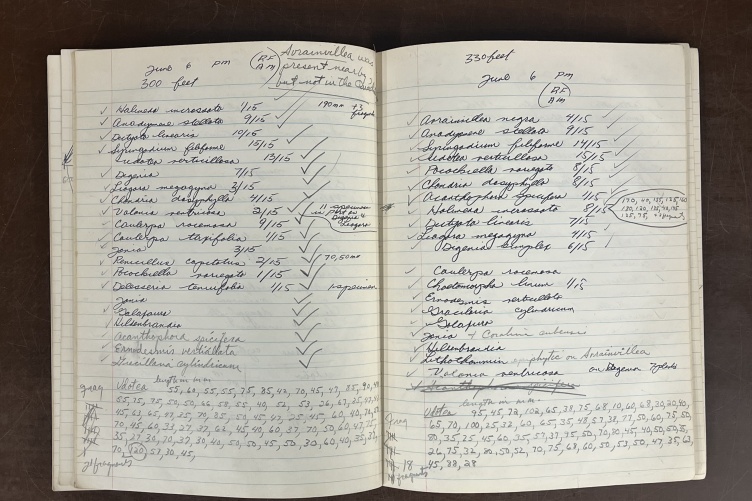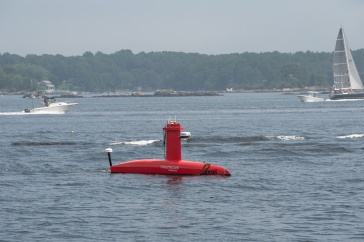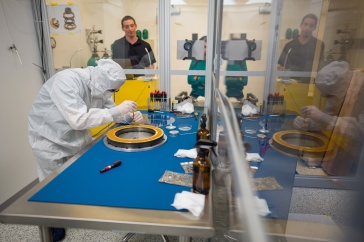
Professor Emeritus Arthur Mathieson's notebook
In fall 2022, Arthur Mathieson, professor emeritus of biology, phycologist and former head of the UNH Jackson Estuarine Laboratory, passed away, leaving behind a legacy of publications on marine botany and a collection of nearly 80,000 herbarium specimens. In collaboration with his wife Myla Mathieson and University Archivist and Interim Special Collections Librarian Elizabeth Slomba, Erin Sigel, manager of the Albion R. Hodgdon Herbarium, has permanently transferred Mathieson’s research notebooks to the UNH Archives, making this interesting part of scientific history available to anyone who is interested. These documents and specimens serve as the best records of the marine algae of coastal New England and adjacent Canada.

Mathieson joined the department of botany at UNH as an assistant professor in 1965. He was director of the JEL — the only academic laboratory dedicated to the study of estuaries in the Northwest Atlantic — from 1972 through 1982.
Among his many achievements, Mathieson was an aquanaut for the Tektite II mission funded by NASA in 1970. As a member of a small crew living in a submerged capsule in Great Lameshur Bay, St. John, U.S. Virgin Islands, Mathieson helped document and study the underwater ecology. Several of his collections of marine algae taken during that project, as well as his notebooks that include details of his time with the mission, are held at the herbarium.
“Dr. Mathieson left a legacy of natural history collection at UNH, including more than 75,000 algal specimens held at the Hodgdon Herbarium,” says Sigel. “This is the fifth largest macroalgae collection in the U.S. and an invaluable resource for researchers around the world. We are very lucky have both his specimens and notebooks preserved at UNH for full a picture of his scientific impact."
In 2017, Mathieson, along with Clinton Dawes, university research professor emeritus at the University of South Florida, published “Seaweeds of the Northwest Atlantic.” The book documents more than 500 types of seaweed and represents more than 40 years of research on Northwest Atlantic seaweeds.
A project that took seven years, the book includes detailed description and illustrations of more than 500 seaweed taxa, including about 2,000 line drawings as well as description of each taxon’s taxonomy, ecology, and economic value. The authors summarized changes in species names and documented more than 30 introduced species based upon long-term field and laboratory studies.
Many of Mathieson’s preserved seaweed samples that helped inform the book can be viewed at the UNH herbarium, which will be permanently located in the Spaulding Life Sciences Building on campus once the renovation of the building is complete in 2024. The herbarium houses one of the largest collections in New England.
-
Written By:
Sarah Schaier | College of Life Sciences and Agriculture



















































